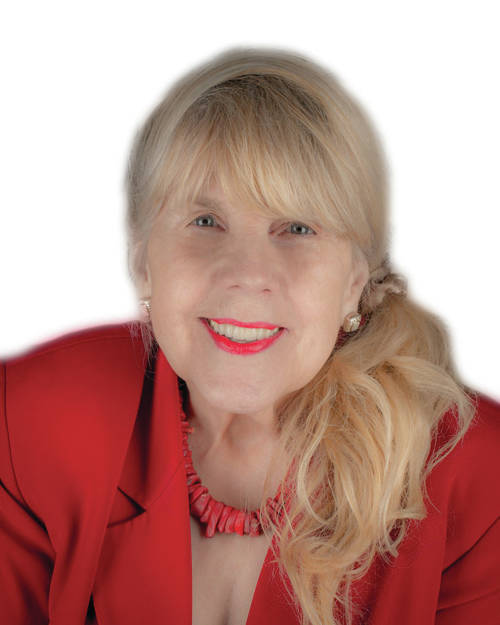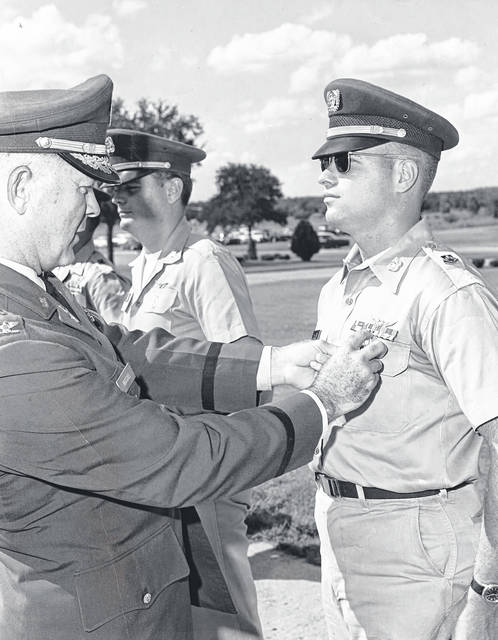

To some of us, the Vietnam War seems like yesterday; however, when we do a reality check, we realize that for those who served there it was a half century plus. And their experiences in that war are at times played out again in their dreams or are triggered in other ways. Take a brief trip with me via my interview with an American pilot who served in that war.
James Edward Miller of Troy, Ohio, asserts, “When an American G.I. is in a foreign country, he must learn some basic things about that country. It’s an insult not to. I’ve lost some of my ability to communicate in Vietnamese, but some of it still sticks with me. We were there to stem Communism. I believed that then, and I still believe it.”
A business major at Bowling Green State University after graduating from Poland Seminary High School in 1963, Miller discovered play time was more important than study time. Believing that he would soon be getting one of those special letters that young men at that time were receiving from Uncle Sam, he knew he had a decision to make.
He went to a friend’s house where he got advice from his friend’s father, a fullbird colonel, “James, do you like to fly? There’s a Warrant Officers Rotary Wing Aviation Course in which you can sleep on clean sheets every night or you can be attempting to get a few winks in a muddy foxhole.”
This sage advice led Miller to the draft board at Youngstown, Ohio, and from there to the Cleveland Induction Center where he received his physical and was sworn into the U.S. Army in December of 1965.
His prior sense of the military had been his observations of his father, Eli Miller, who was a machine gunner on an armored half-track in the European Theater during World War II. A Purple Heart recipient who suffered a permanent injury to his hand when his vehicle hit a mine, Mr. Miller never talked about his experience.
Following induction, Miller soon was involved in educational experiences of a different kind from those at BGSU. Of his basic training at Fort Polk in Louisiana he reports, “It was hell — the lowest point in my life with physical and mental abuse. We arrived at the base late at night and had to wait out on the grinder from 2 a.m. until 6 or 7. Then, they made us run to the mess hall which was two miles away with men puking their guts out, and then we had to run back with a drill sergeant ridiculing us. Our punishment for infractions was the dying bug position, lying on our backs with arms and legs up.”
He says that later came the mental tests where they were told they’d be shot at in Vietnam and their job was to concentrate on the mission. And there were those proficiency tests.
Following the rigors of Fort Polk, Miller had a month’s leave before he was off to Fort Walters in Texas and Fort Rucker in Alabama to learn how to fly basic training helicopters and then the Huey helicopter (UH-1D) with the specific flying skills necessary in Vietnam.
Of those lessons, Miller says, “There was no autopilot in helicopters at that time, and both hands and feet were busy all the time. It was like patting your head, rubbing your stomach, and doing a jig all at the same time.”
Miller was promoted to warrant officer with his flying wings and in February 1967, it was off to Vietnam.
“When we went to work in Vietnam flying helicopters, it was like nothing we’d ever done. In World War II, there was a front line; in Vietnam the enemy was everywhere. We were always on alert, could never let down for if we did, the enemy would strike. We were shot at every day.”
And Miller had experiences in the Mekong Delta at age 22 that still stay with him at age 75. Triggers still occur: transporting wounded or dead, being under mortar and rocket fire, direct artillery fire in outposts under attack. One scene he was required to fly over 10 to 12 times stays with him: the trunk of a body, limbs missing, positioned up against a tree.
The North Vietnamese Army tried to overrun Miller’s base twice in the year he was there. His mission was “ash and trash” as he words it: to bring in supplies, to transport troops with the occasional compliment, “The helicopter you sent saved our ass.” Miller received a half-dozen medals for his service in Vietnam but is most proud of the Distinguished Flying Cross for heroism.
Hollywood actors came to the war zone. Miller says, “Charlton Heston and Martha Raye went into the boondocks, put their lives on the line — unlike Bob Hope who only showed up to entertain thousands.”
As Miller returned to the U.S. after his year in Vietnam, he like so many others before and after at the airport in San Francisco, were greeted by protesters. Since he arrived at 2 a.m., he says, “No one threw anything at me — a friend had a bucket of urine thrown at him. All I got was a little screaming, nothing compared to getting shot at.”
In conclusion, the average age of the American soldier on the ground in Vietnam was 19. As a pilot, Miller went there at age 21 and turned 22 while there. To you, my readers, I ask, “Where were you at age 19, 20, 21,22?”
Miller has recorded his military service in “Warrior Two Six” available at Amazon.com.
Thank you, Jim, for your valor, your service to our country. And in case any of you are interested, Jim earned his college degree in 1997 in Aviation Technology from Capital University. And when Martha Raye was at Memorial Hall in Dayton performing in “Annie” and was not signing autographs, Miller was told, “Right this way, sir” and was escorted to her dressing room where they had a 30-minute conversation about how it was back in the days of the Vietnam War.






